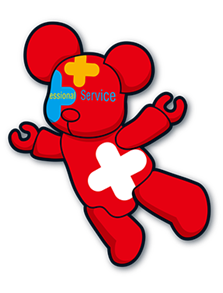Authors (including presenting author) :
Karin Chow(1), Jason Chan(2) , MS Chi (1), Members of NTWC – Taskforce on AIS review
Affiliation :
Acute Stroke Unit (1), Department of M&G, Department of DR & NM (2), Tuen Mun Hospital, New Territories West Cluster, Hospital Authority.
Introduction :
The use of endovascular thrombectomy (EVT) to treat patients with acute ischemic stroke (AIS) increased dramatically in 2016 world widely after proven clinical benefit of the therapy. As a stroke center, Tuen Mun Hospital enhanced a hub-and-spoke model to support regional hospitals in the same cluster of Pok Oi (POH) and Tin Shui Wai hospital (TSWH) by refining and reshaping delivery of the EVT service. A major step to move forward is a parallel processing model, in which patients with an acute clinical presentation of a stroke eligible for EVT will simultaneously undergo CT angiography to confirm and localize the large-artery clot causing their stroke, receive IV-tPA, and undergo preparation through cluster-based expertise discussion and access to decide the need for EVT. It could also further cut time to intervention, while making EVT more widely available within cluster.
Objectives :
• To increase the provision of Endovascular thrombectomy (EVT) to AIS patients with large vessels occlusion (LVO) in NTWC. • To offer fast triage of EVT efficiently with a sustainable cluster-based stroke team approach. • To shorten the Door-to-groin time
Methodology :
• Data collected from 17/7/2016 to 16/7/2018 by TMH stroke nursing team • To build up our cluster-based team approach system by divided into three phases Phase 1: Local practice and key guidelines review, selected fast triage tools (RACE score) to identify LVO Phase 2: Special cases and problems arise for debriefing, set up web-based expertise discussion group via HA chat Phase 3: Strategy on execution, quarterly Data analysis with review for feedback
Result & Outcome :
Data compared by two periods: 17/7/2016 to 16/7/2017 and 17/7/2017 to 16/7/2018.
• There were total 2822 AIS patients admitted to TMH ASU. After enhancement, there were total 73.2% increased (366 to 634 patients) for potential IV/IA intervention screening. Among that, 2 times increased in group of patients transferred from POH/TSWH (161 to 328)and total 146 patients for potential intervention screening, EVT patients increased from 4 to 14 in total.
• There was 83% of patients (18 to 33 patients) increased for EVT as compared.
• Upon the parallel processing model with fast triage tools for LVO adopted, the door-to-CTA time is shortened for 48%.
• Average D-T-G decreased from 179 minutes to 133 minutes • Average D-T-G in TSWH was 5 minutes different from TMH, which supported the effectiveness of our hub-and spoke system. Conclusion: For instance, Thrombectomy capable centers should exist within stroke systems of care and might serve an unmet regional need. Expertises have to exhibit a patient-centric, highly collaborative relationship to advance common goals of stroke care. Capacity to plan, deliver and evaluate high quality acute stroke services is essential for improvement of health care delivery and patient outcomes.








